Trip Overview: ~38 mile backpacking trip in Desolation Wilderness near South Lake Tahoe. This loop traverses over Rockbound Pass and Dicks Pass on its way to the beautiful Lake Aloha. Along the route you are treated to amazing scenery with highlights including: alpine lakes, granite peaks, meadows, waterfalls, and expansive views of El Dorado National Forest. +/- ~6,000 feet of elevation with a starting elevation of 6,960 feet and a peak elevation of 9,370 feet. The photos in this post are from a trip in early July 2020.


- Link to download USGS topographic map of area (CA_Fallen Leaf Lake_geo)
- Link to purchase printed USGS topographic map of area (Amazon map)
- High resolution overall route map (PDF)
Jump to Day 1: Rockbound Trailhead to Maud Lake
Jump to Day 2: Maud Lake to Fontanillis Lake
Jump to Day 3: Fontanillis Lake to Lake Aloha
Jump to Day 4: Lake Aloha to Rockbound Trailhead
Shop Deal of the Day at REI Outlet (up to 50% off)!
Preparations:
Click here to read more about Permits
Permits: Permits are required year-round for overnight camping in Desolation Wilderness. During the summer (Friday before Memorial Day to Sept. 30), there is a permit quota for each different zone in the wilderness. Desolation Wilderness is split into 45 zones and the quota for each zone varies from 2 permits to 40 permits. More info about the permits and zones can be found on the Forest Service website. Your permit only specifies your night of entry into the wilderness and the zone you will camp in on the first night. After your first night, you are allowed to hike and camp anywhere within Desolation Wilderness.
70% of the permit quota for each zone is available for advanced reservation on recreation.gov for a $10 reservation fee. The remaining 30% of permits are available on a first-come, first-serve basis on the day of entry. The day of permits are claimed and picked up at one of the nearby ranger stations.
Click here to read more about Logistics
Logistics: If you would like to camp at the trailhead the night before your trek, there is Wright’s Lake Campground very close. This campground requires reservations in the summer though and can fill up quickly. Other options include many of the first-come, first-serve forest service campsites or dispersed camping along the roads in El Dorado National Forest.
There are parking lots near the Rockbound Trailhead and Twin Lakes Trailhead, where you can leave your car during your hike. There is no fee for parking so long as you have an overnight camping permit, and there is a restroom near the parking lot. For water, we did not see a tap at the parking lot, but there is a potable water tap at the nearby Wright’s Lake Campground. Both the Twin Lakes Trailhead and Rockbound Trailhead can be used for entry for this loop and the routes merge by about the 2 mile mark. From there a single trail leads to Rockbound Pass. Just make sure to use the trailhead that you listed on your wilderness permit.
Click here to read more about Difficulty
Trail Conditions and Difficulty: Overall this route is fairly difficult when hiked in 4 or fewer days. The main challenges are uneven footing on the rocky trails and some sections of trail that are not well marked. Hiking on rocky trails can slow you down and cause some foot/ankle stress, so plan to hike a bit slower than usual on portions of this loop. The trail is also less-than-well marked in several areas of this loop. You should have a map handy and also may want a GPS or offline map loaded on your phone. When the trail goes above the treeline, you sometimes need to look closely for cairns to ensure you are on the right track. The mileage and elevation gain on this loop are not especially difficult, but the trail issues mentioned above can make the loop more difficult than it initially appears. The beautiful scenery more than makes up for the trial issues though!
There are several small creek and river crossings along the loop that you must negotiate but it is unlikely that the water level would be too high to safely cross. Rockbound Pass and Dicks Pass can be snowy in June and early July, so be prepared to traverse over snow (and potentially wear crampons) if you are backpacking early in the summer. If you are comfortable traversing over snow, it is wise to wait until late July before heading out.
Supplies: There are black bears in the area, so you will want either a bear canister or ursack and rope for hanging your food. Doing so will also protect your food from the marmots and chipmunks that seem to search campsites for food.
You likely will want bug spray because the mosquitoes can be out in force in certain areas of the trek. I prefer a picaridin based spray because it does not damage plastics and synthetic fibers like high concentration DEET sprays do. I also like to pre-treat my clothes and tent with permethrin spray repellent. The permethrin treatment stays on your clothes for up to 6 washes, so it helps reduce the amount of spray you need to put on your skin.
The other essential item for this trek is an inflatable sleeping pad. Many of the campsites are on pretty hard granite or gravel surfaces, so a good mat makes all the difference. If you are hiking while the passes are still snowy, you will want trekking poles and possibly microspikes/crampons.
Below is a list of the gear recommended for backpacking this loop in Desolation:
Hiking clothes
- a lightweight hiking rain jacket (North Face Venture 2 Jacket)
- fast drying synthetic hiking pants (prAna Zion Pants)
- a quick drying long sleeve hiking shirt (Columbia Silver Ridge L/S Shirt)
- wool outer socks (People Socks Moreno 4-pack)
- thin blister preventing base socks (WrightSock double layer Coolmesh)
- quick drying synthetic boxer briefs (ExOfficio Give-N-Go)
- Gore-tex hiking shoes (adidas Outdoor Terrex Fast R Gore-Tex Shoe)
Clothes for camp
- wool leggings (Minus33 Merino Wool Kancamagus Midweight Bottom)
- wool base layer shirt (Minus33 Merino Wool Chocorua Midweight Crew)
- warm wool overshirt (Pendleton Long Sleeve Classic-Fit Board Shirt)
- lightweight down jacket (Patagonia 800-fill Down Jacket)
- lightweight camp shoes (Xero Z-Trail lightweight sandal)
Hiking gear
- topographic map (USGS Desolation Wilderness Map)
- trekking poles (Black Diamond Trail Ergo Cork Trekking Poles)
- 2 liter hydration bladder (Platypus Big Zip Water Reservoir)
- 65 liter backpack (Osprey Atmos 65 Liter pack)
- water filtration system (Platypus gravity filtration system)
Camp gear
- strong tent with rain-fly (Alps Mountaineering Chaos 2 Tent)
- inflatable sleeping pad (Therm-a-Rest Trail Pro Sleeping Pad)
- sleeping bag (REI Co-op Igneo 25 Sleeping Bag)
- inflatable camping pillow (Ultralight Inflating Pillow)
- lightweight backpacking chair (Helinox Chair Zero)
- lightweight lantern (MPOWERD Luci Outdoor 2.0)
- headlamp (Black Diamond Cosmo Headlamp)
- multi-tool with knife (Gerber MDime Mini Multi-Tool)
- Ursack (Ursack Major bear bag) or bear canister (BearVault BV500)
- lightweight stove (MSR PocketRocket 2)
- lighter (BIC plastic lighters)
- 2 liter pot (GSI Outdoors Halulite Boiler Pot)
- coffee cup (GSI Outdoors Glacier Stainless Cup)
- lightweight spork (Snow Peak Titanium Spork)
- small, quick drying towel (REI mutli towel mini)
Random
- wet wipes (Stall Mates individually wrapped wipes)
- mole skin for blisters (Blister medic kit)
- lightweight trowel (GSI Sanitation Trowel)
- small amount of duct tape for gear repairs
- chapstick and sun screen
Food and drink
- a variety of my favorite dehydrated meals
- electrolyte replacement (NUUN Hydration Tablets)
- quick snacks (Clif Shot Bloks and Clif energy bars)
- instant coffee (Starbucks VIA)
- small plastic water bottles filled with whisky 🙂
……….
Day 1: 5 miles; +1,000 feet / -300 feet; Rockbound Trailhead to Maud Lake


We chose to stay Maud Lake on our first night due to a combination of permit availability and of wanting to keep the mileage moderate on the first day. If you wished to cover more ground on the first day, Lake Doris, Lake Lois, or Lake Schmidell could all make for possible destinations (just make sure to specify your correct destination on your permit). We parked and started our trek at the Rockbound Trailhead. There is a bathroom at the trailhead, but no potable water source so plan accordingly.
The trail modestly climbs through a forest for most of the first 2 miles. The views in this section are nice, but nothing spectacular. After the 2 mile mark, the trail begins to rise out of the forest and the views really open up. You traverse some large granite areas and get nice views of the surrounding peaks. After the 3 mile mark, you begin a final ~500 foot climb that ends at Maud Lake. We found a variety of campsites around Maud Lake, so you can choose whether you want to be closer to the shore or set back further for privacy. We found a nice elevate site on the west side of lake that had a nice view and also had a bit of a breeze, which kept the mosquitoes at bay.
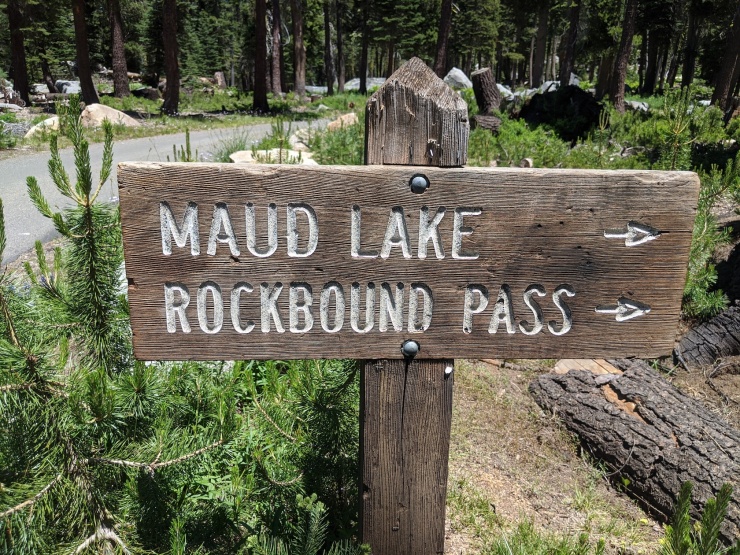

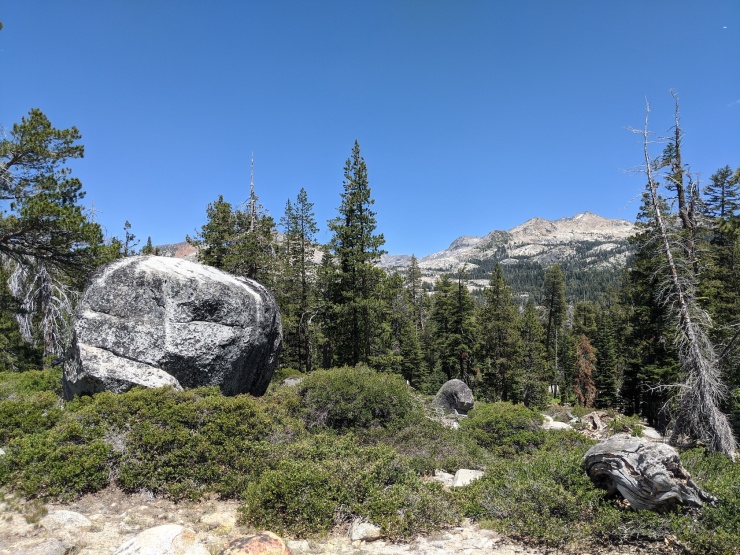







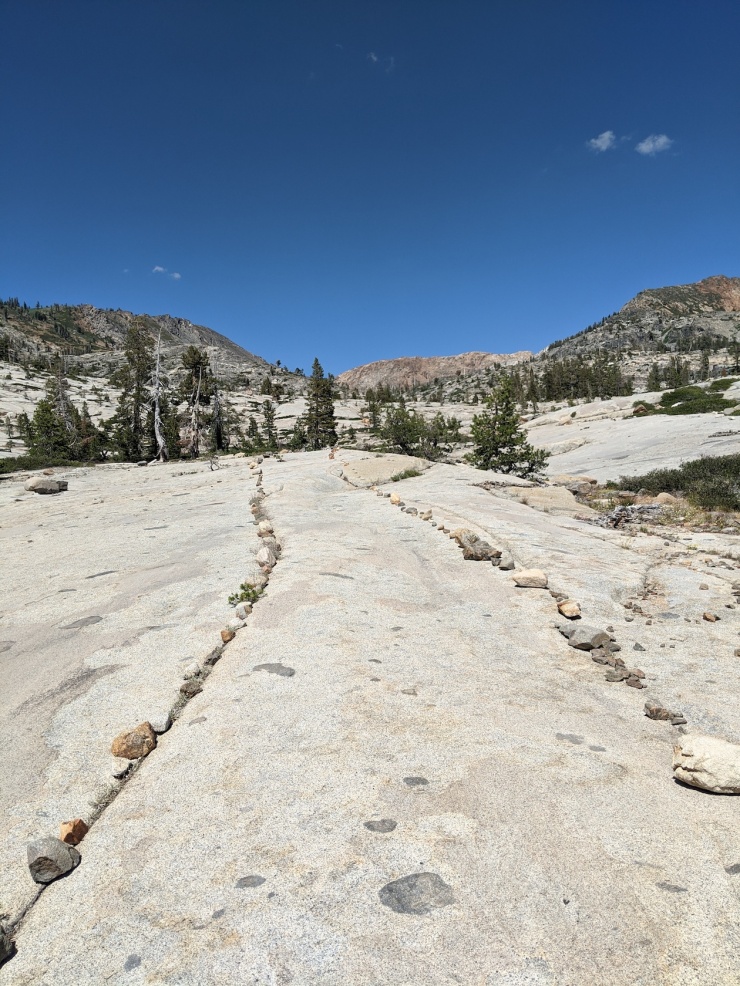










……….
Day 2: 10 miles; +2,400 feet / -1,700 feet; Maud Lake to Fontanillis Lake


On the second day we headed up through Rockbound Pass and then passed by Lake Doris, Lake Lois, and Lake Schmidell. After reaching Lake Schmidell, the trail heads east past Camper Flat and across the Rubicon Valley. At the ~7 mile mark, you reach Velma Lakes. You have the option to camp at either of the Velma Lakes, Fontanillis Lake, or Dicks Lake.
The trail leading up to Rockbound Pass is quite rocky so good socks and hiking shoes are important! It is about a ~900 foot climb up to the pass and the views are great along the way. After the pass, the trail is less rocky and you will be able to hike faster. In the 2 miles after Rockbound Pass, the trail descends down past Lake Doris and Lake Lois. Both lakes have some very scenic campsites. You then descend another 500 feet to the shore of Lake Schmidell. We crossed the outlet dam here and had lunch on the southeast shore of the lake.
From Lake Schmidell, the trail steadily descends down to China Flat and the Rubicon River. We had to remove our shoes and cross the river here, but it was only calf deep. After the crossing you climb ~700 feet over 2 miles before reaching the junction with the PCT near Middle Velma Lake. It is then roughly another 2 miles and 400 feet of climbing through the forest before you reach the beautiful Fontanillis Lake. We did a little scrambling off trail and found a great campsite on a granite outcrop on the north side of the lake. There are also a variety of campsites sprinkled along the east shore of Fontanillis Lake.










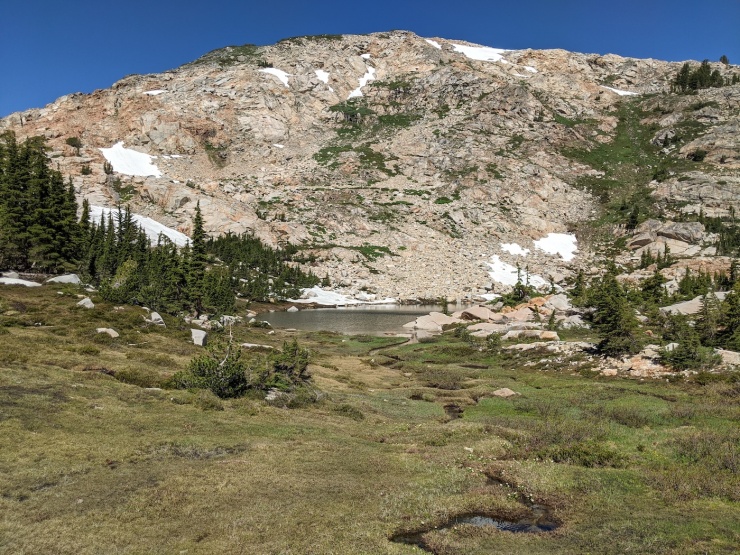



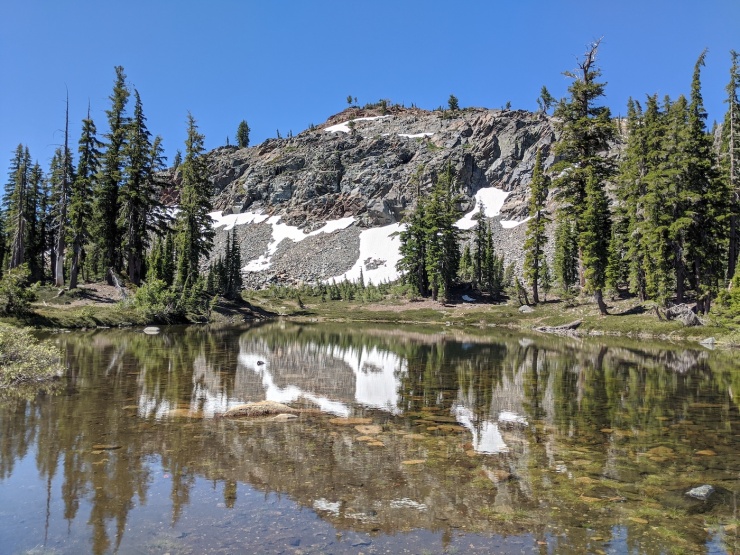







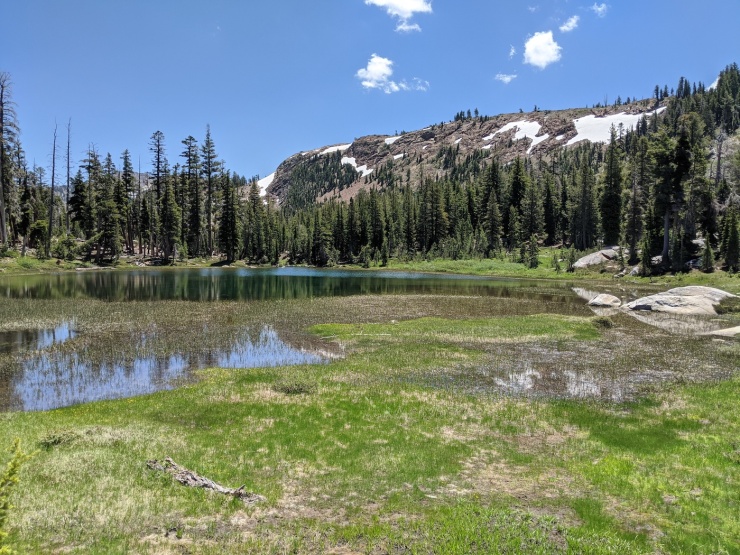



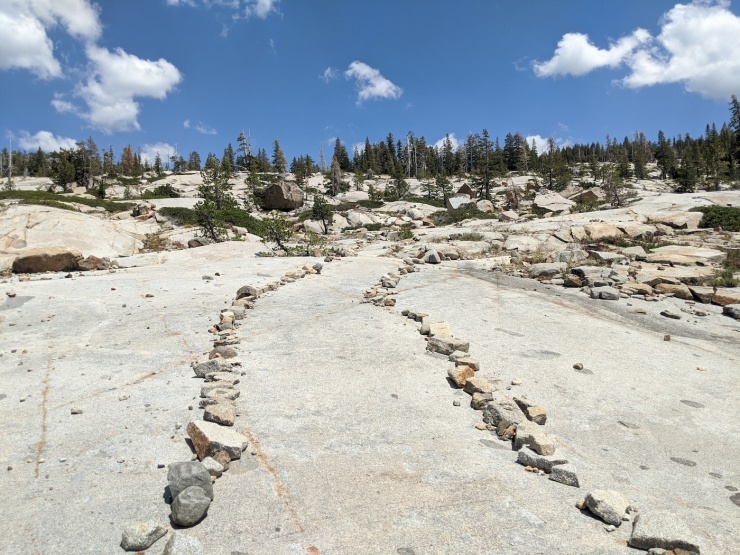



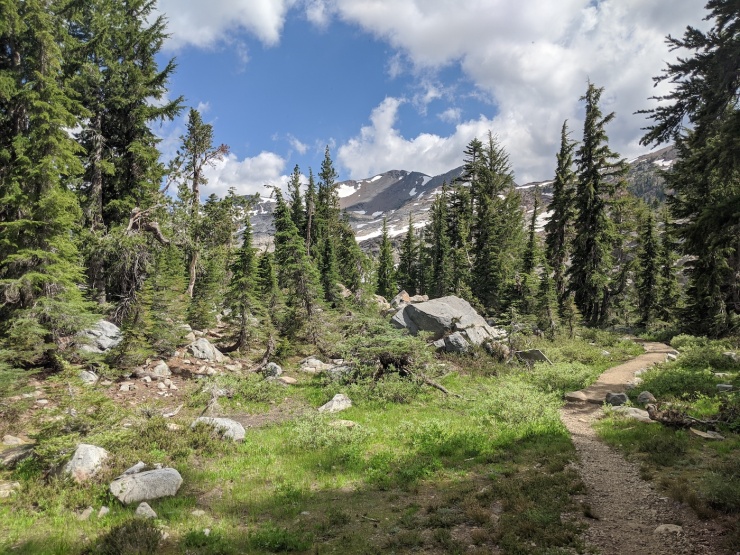
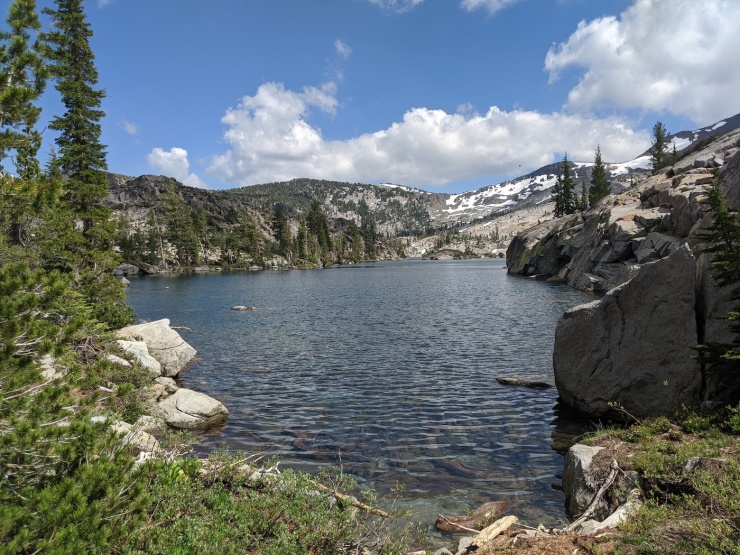





……….
Day 3: 10 miles; +1,900 feet / -2,100 feet; Fontanillis Lake to Lake Aloha


To start the third day, you hike along the PCT as it follows the shore of Fontanillis Lake. The trail then reaches Dicks Lake before starting a ~1,000 foot climb up to Dicks Pass. There are great views at the top of Dicks Pass. To the north you see Dicks Lake, Fontanillis Lake and Velma Lakes. To the south you see Half Moon Lake, Dicks Peak, Susie Lake, and Lake Aloha.
From atop Dicks Pass, the PCT then descends ~1,700 feet over the course of ~3 miles before reaching Susie Lake. This section of trail was quite rocky and rough on our feet. Susie Lake made for a nice lunch spot where you can recharge before hiking to Lake Aloha. From Susie Lake it is a gradual climb over the next 3-4 miles before you reach Lake Aloha. Along the way the PCT skirts along the shore of beautiful Heather Lake.
When you reach Lake Aloha, you must choose what sort of campsite you want. If you follow the trail west towards Mosquito Pass, you can find a variety of sites along the north shore of Lake Aloha. Some sites are close to shore of the lake (between the shore and the trail) offering spectacular views and easy water access, while others are set away from shore (north of the trail) and offer more privacy and less wind. We found a great site tucked in a group of trees north of the trail. This provided relief from the wind, but also still gave us a great view of the lake.



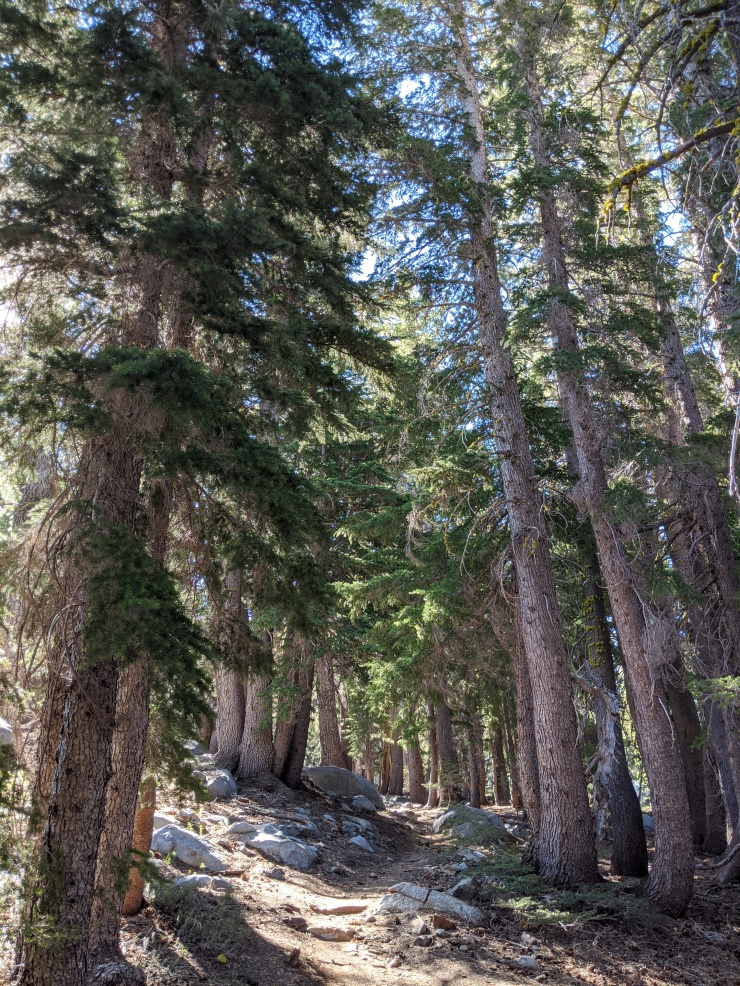


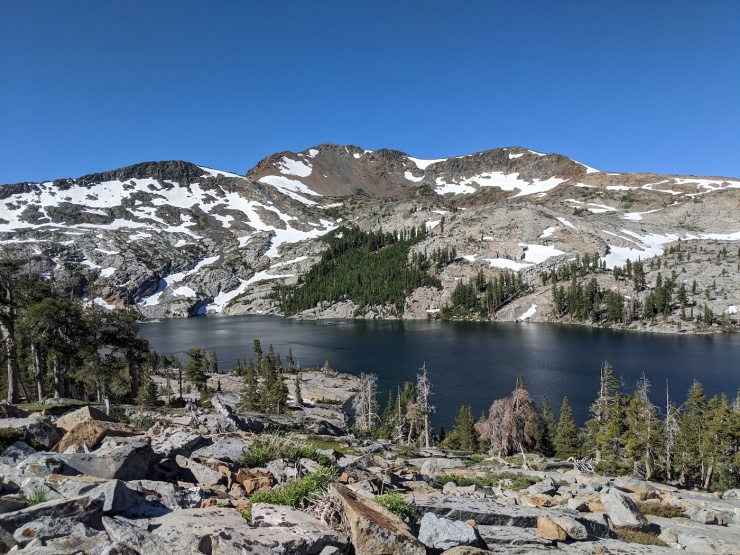



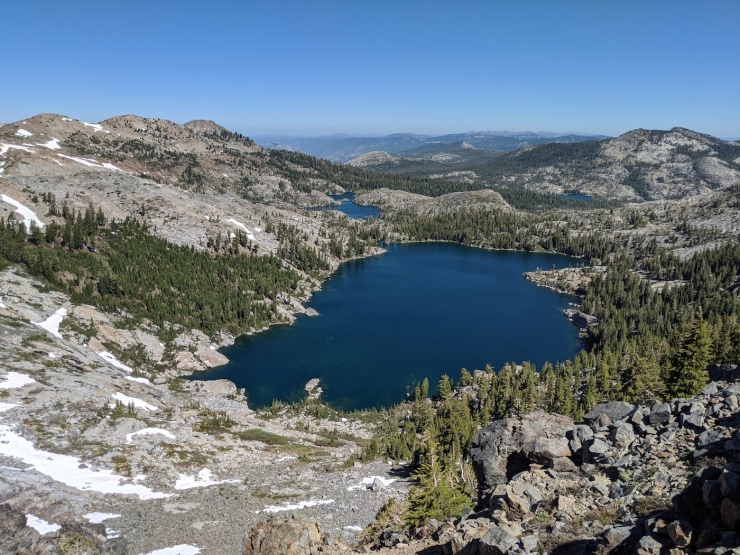



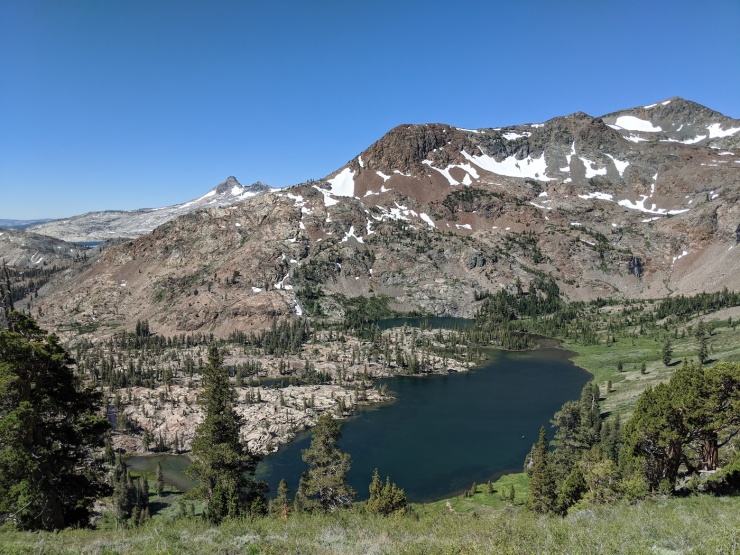


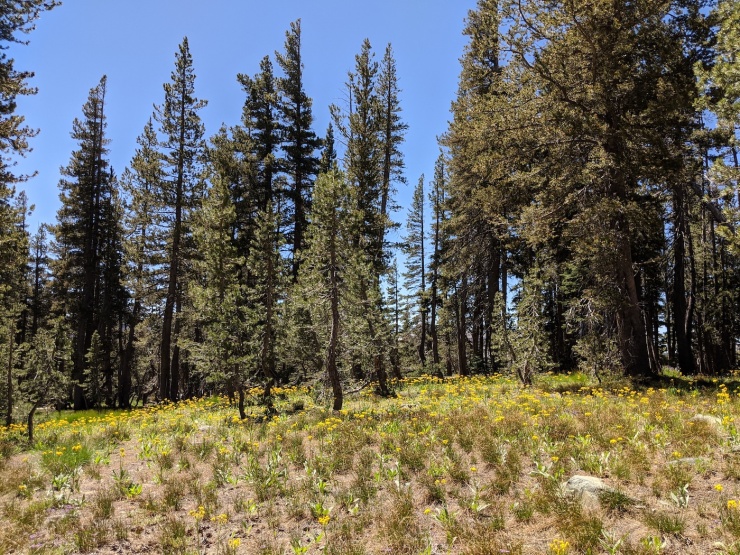



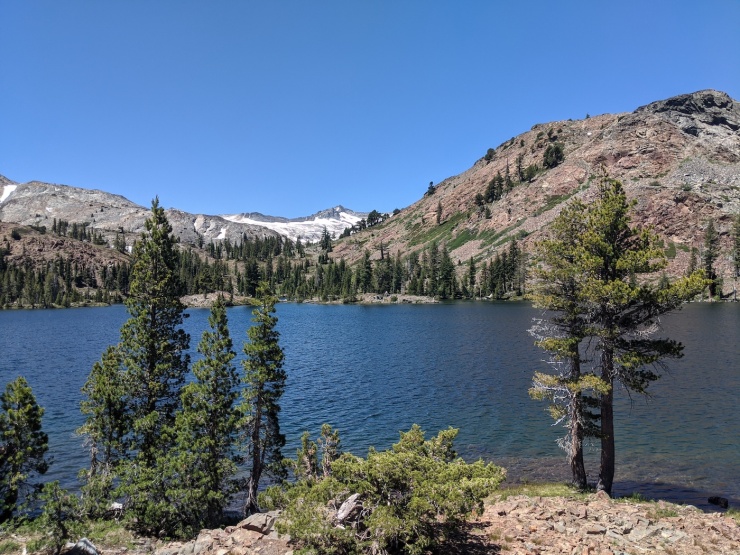





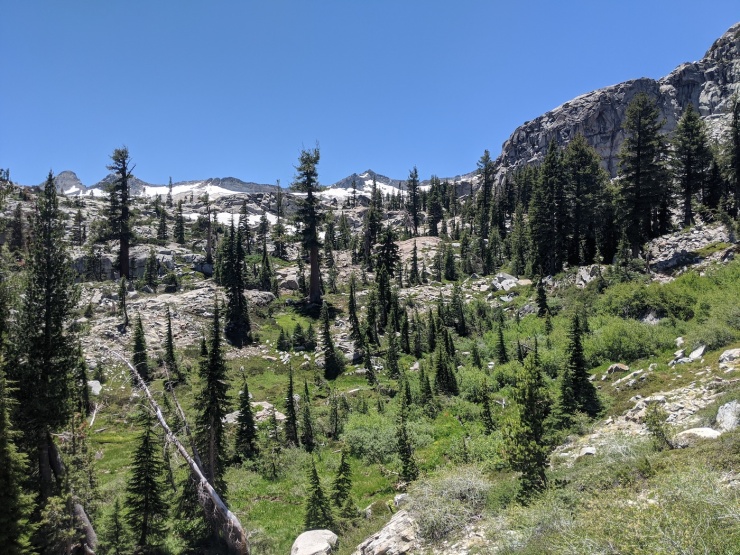







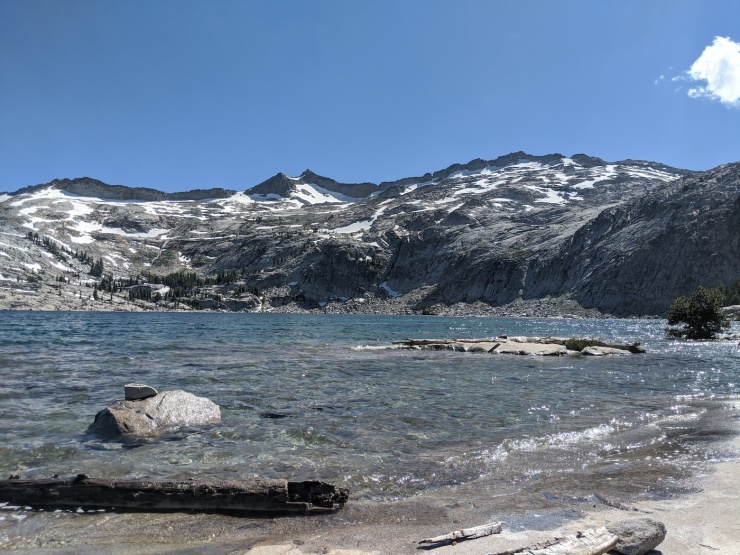


……….
Day 4: 12.5 miles; +1,800 feet / -3,000 feet; Lake Aloha to Wrights Lake
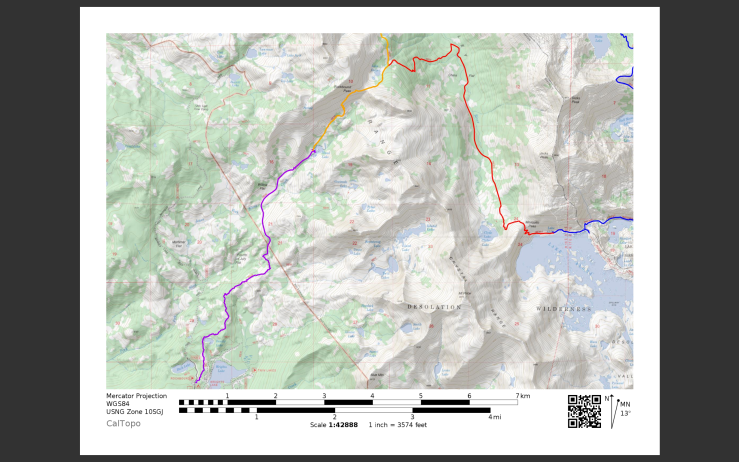

The final day is the longest hike as you go from Lake Aloha back to the trailhead at Wrights Lake. The trail heads north up to Mosquito Pass and then down towards Clyde Lake. From the top of Mosquito Pass you get a partial view of Clyde Lake and nice views of the Rockbound Valley. There is a side trail that leads to the shore of Clyde Lake, but we skipped it since it is a bit long for just a quick look at the lake.
After Clyde Lake, the trail descends for a mile before reaching the Rubicon River. Over the next mile the trail follows the river through the forested valley. You are treated to some nice serene hiking along the river here, but also need to watch out for mosquitoes. The trail crosses the river a couple times, but we may be able to rock hop across without removing shoes.
At the ~3.5 mile mark, you reach a junction and head west towards Rockbound Pass. The trail steeply climbs ~1,100 feet over the next 2 miles before you reach the top of the pass. From there, you descend down the trail back to the Rockbound Trailhead.



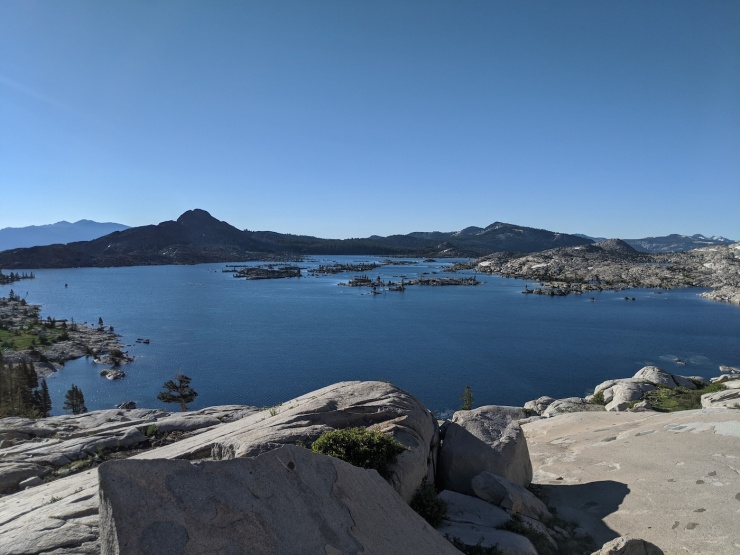




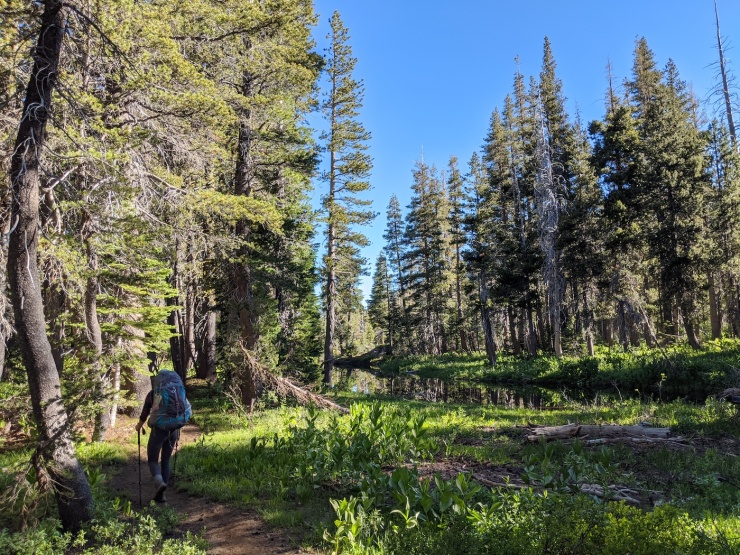



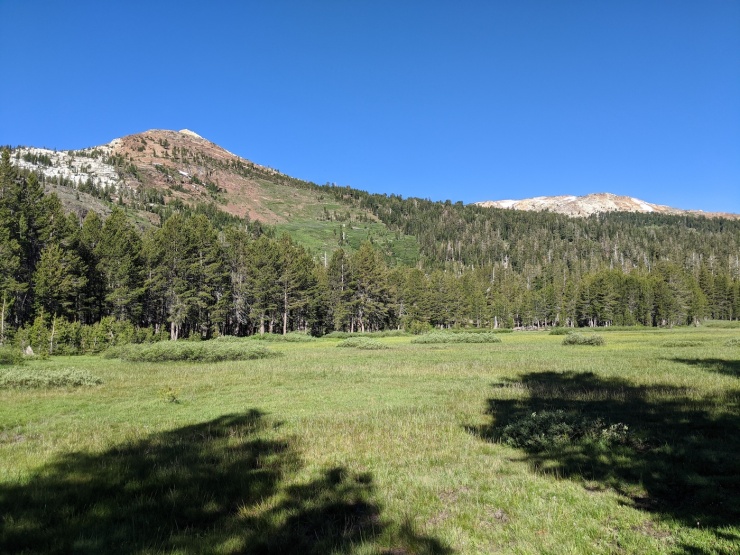




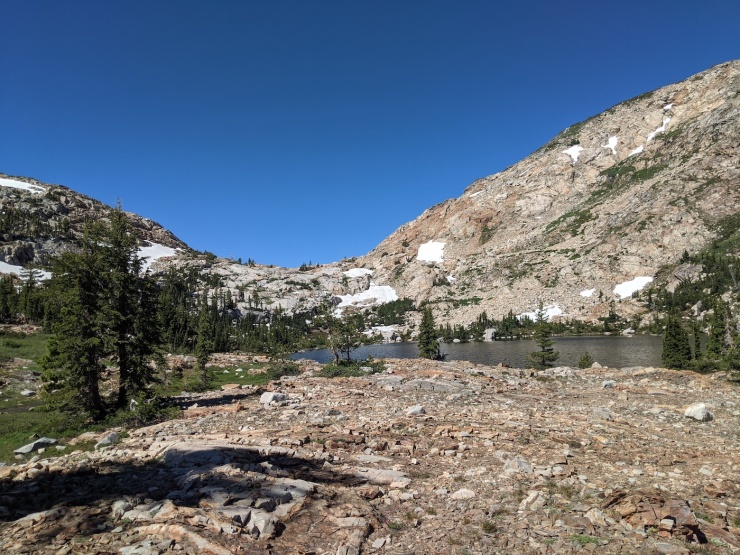








……….
Here are some similar trip reports!
Twin Lakes and Island Lake – Desolation Wilderness (12 mile trek)
Timberline Trail – Mount Hood Wilderness, OR (40 mile loop)
Four Pass Loop – Maroon Bells Snowmass Wilderness, CO (28 mile loop)
Broken Top Loop – Three Sisters Wilderness (24 mile loop)
Trinity Alps Wilderness Backpacking – Emerald and Sapphire Lakes







Love the photos.. How were the skeeters along the loop? I got eaten alive in desolation two years ago.
LikeLike
Hi Jim – The mosquitoes were not too bad at any of the lakes we camped at (Maud, Fontanillis, or Aloha). Each had a slight breeze, which kept the bugs at bay. The section of trail between Mosquito Pass and Camper Flat that follows the Rubicon River had a lot of mosquitoes though. You will want to hike quickly through this section.
LikeLike
Awesome write up. I camped near Lake Schmidell two weeks ago and the trail was quite tricky coming from Camper Flat. Was most of the snow gone when you were there?
LikeLike
Hi Dave – There was no significant snow on the trail between Rockbound Pass and Lake Schmidell or between Schmidell and Camper Flat. There must have been a lot of melt in the last two weeks!
LikeLiked by 1 person